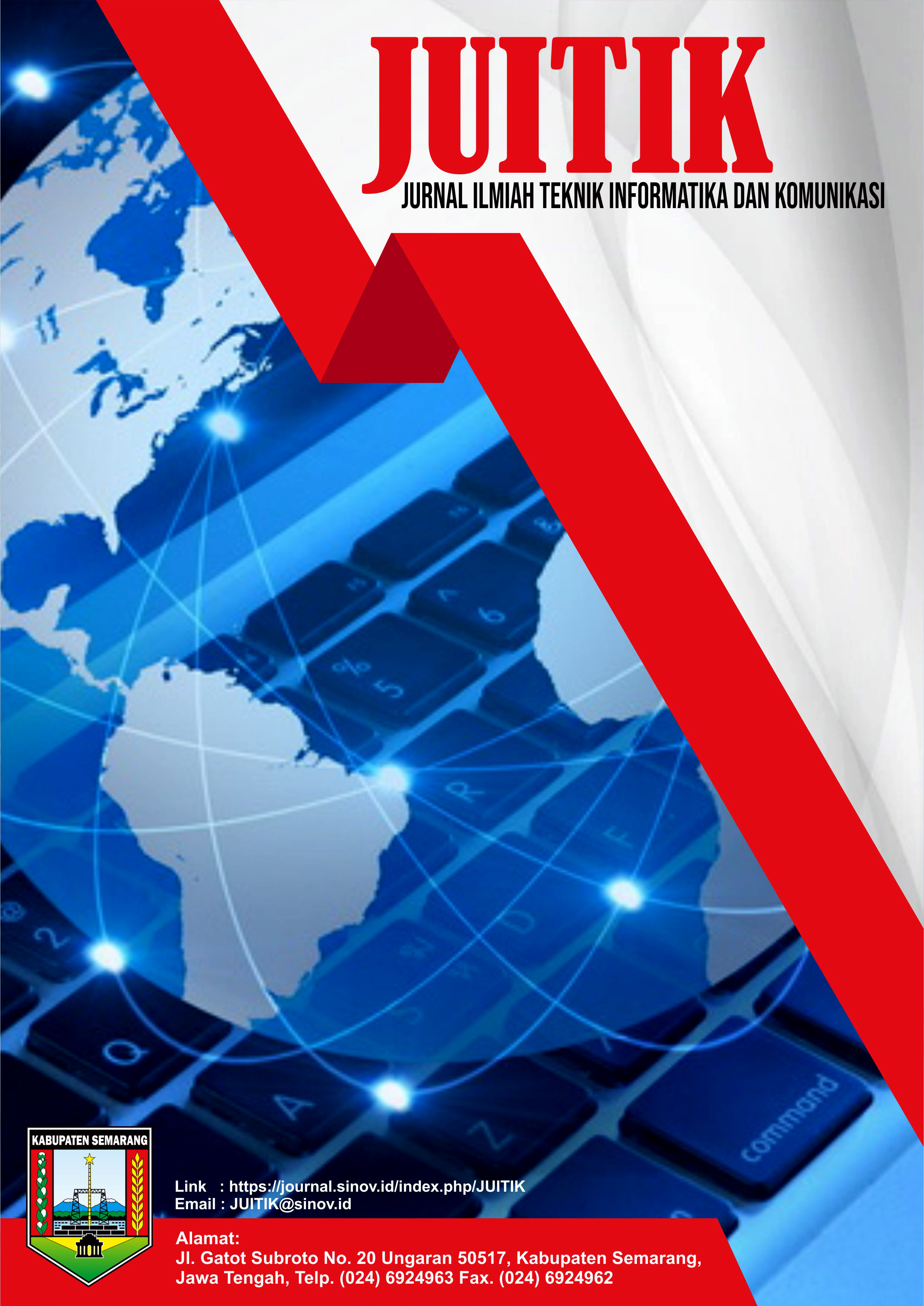Penerapan K-Means Clustering pada Pengelompokan Pelamar di Sistem Rekrutmen Berbasis Web
DOI:
https://doi.org/10.55606/juitik.v5i3.1498Keywords:
Clustering, efficiency, job selection, K-Means, recruitmentAbstract
In an increasingly competitive world of work, companies are required to have a fast, efficient, and objective employee selection process to get the best candidates. However, the high number of job applicants often causes the administrative selection process to be slow, inefficient, and prone to subjective errors in assessment. Therefore, a technology-based solution is needed that is able to systematically classify job applicants based on relevant criteria. This study proposes the application of the K-Means Clustering method to group job applicants based on three main variables, namely last education, work experience, and selection test scores. A total of 20 applicant data were analyzed using the K-Means algorithm with the stages of initial centroid initialization, Euclidean distance calculation, and iteration until the convergence point was reached. The results of the grouping resulted in three main categories: prioritized, considered, and doubtful applicants. Each group has its own characteristics that can help the HRD team in compiling a more selective and accurate list of candidates. This system is implemented in the form of a web-based recruitment platform that makes it easier for companies to conduct early selection automatically, structured, and data-based. The use of this method also increases accuracy and transparency in decision-making and reduces the potential for bias that often occurs in manual selection. These findings prove that K-Means Clustering is an effective and applicable method to support strategic decision-making in the field of human resources, especially in the early stages of employee selection. Additionally, this method can be easily adapted to the needs of other companies that have different selection criteria, making it flexible and widely applicable. The potential for the development of this system is also open to integration with other technologies such as machine learning or big data analytics in the future.
References
Al Hanif, H. K., Kurniawan, T. A., & Wisjhnuadi, T. W. (2023). Rancang bangun aplikasi kriptografi dengan metode Rivest Code 4 (RC4) untuk pengamanan file dokumen berbasis web: Aplikasi data mining untuk clustering daerah penyebaran Covid-19 di DKI Jakarta menggunakan algoritma K-Means. Jurnal Ilmiah Fakultas Teknik LIMIT'S, 20(2). https://doi.org/10.59134/jlmt.v20i2.603
Damayanti, A., & Putri, R. A. (2024). Penerapan algoritma K-Means clustering dalam pola penjualan beras. Journal of Computer System and Informatics, 5(4), 903-911. https://doi.org/10.47065/josyc.v5i4.5734
Fajar, A. Y., Ishak, & Rico, I. G. (2024). Pengelompokan pelatihan tenaga kerja berdasarkan data pelamar kerja menggunakan metode K-Means. Jurnal Sistem Informasi TGD, 3(3), 411-421. https://doi.org/10.53513/jursi.v3i3.10076
Handayanna, F., & Sunarti. (2024). Penerapan algoritma K-Means untuk mengelompokkan kepadatan penduduk di Provinsi DKI Jakarta. Journal of Applied Computer Science and Technology, 5(1), 50-55. https://doi.org/10.52158/jacost.v5i1.477
Indraputra, R. A., & Fitriana, R. (2020). K-Means clustering data COVID-19. Jurnal Teknik Industri, 10(3). https://doi.org/10.25105/jti.v10i3.8428
Kartikasari, Y. A. P., Pranoto, Y. A., & Rudhistiar, D. (2021). Penerapan metode K-Modes untuk proses penentuan penerima Bantuan Langsung Tunai (BLT). Jurnal Mahasiswa Teknik Informatika, 5(1). https://doi.org/10.36040/jati.v5i1.3300
Lina, L., Yoga, H. A., & Mochammad, Z. R. (2019). Implementasi algoritma K-Means cluster untuk rekomendasi pekerjaan berdasarkan pengelompokkan data penduduk. STMIK.
Melladia, Putra, D. E., & Muhelni, L. (2022). Penerapan data mining pemasaran produk menggunakan metode clustering. Jurnal TEKINKOM, 5(1). https://doi.org/10.37600/tekinkom.v5i1.458
Nuhzatul, A., Rifky, K., Agus, S. I., Syunu, T., & Muhamad, S. (2025). Peran manajemen sumber daya manusia dalam meningkatkan produktivitas organisasi. Jurnal Bisnis Mahasiswa, 5(3). https://doi.org/10.60036/jbm.619
Pribadi, W. W., Yunus, A., & Wiguna, A. S. (2022). Perbandingan metode K-Means Euclidean Distance dan Manhattan Distance pada penentuan zonasi Covid-19 di Kabupaten Malang. Jurnal Mahasiswa Teknik Informatika, 6(2). https://doi.org/10.36040/jati.v6i2.4808
Primandana, A., Adinugroho, S., & Dewi, C. (2019). Optimasi penentuan centroid pada algoritme K-Means menggunakan algoritme Pillar (Studi kasus: Penyandang masalah kesejahteraan sosial di Provinsi Jawa Timur). Jurnal Pengembangan Teknologi Informasi dan Ilmu Komputer, 3(11), 10678-10683.
Putrama, A., & Agus, P. W. (2019). Penerapan K-Means cluster pada daerah potensi pertanian karet produktif di Sumatera Utara. SAINTEKS, 762-767.
Rozzi, K. D., Safwandi, Novia, H., & Nur, A. (2020). Analisis K-Means clustering pada data sepeda motor. Journal Informatics, 5(1). https://doi.org/10.19184/isj.v5i1.17071
Widianti, E. P., & Lestari, S. (2024). Implementasi K-Means clustering pada big data di sistem rekomendasi film. Jurnal Pendidikan Tambusai, 8(2), 21567-21576.
Wijayanti, R., & Kurniawan, D. (2023). Implementasi algoritma K-Means clustering dalam sistem rekomendasi lowongan kerja berbasis web. Jurnal Teknologi dan Sistem Informasi, 6(2), 122–130. https://doi.org/10.33365/jtsi.v6i2.1421
Downloads
Published
How to Cite
Issue
Section
License
Copyright (c) 2025 Jurnal Ilmiah Teknik Informatika dan Komunikasi

This work is licensed under a Creative Commons Attribution-ShareAlike 4.0 International License.










